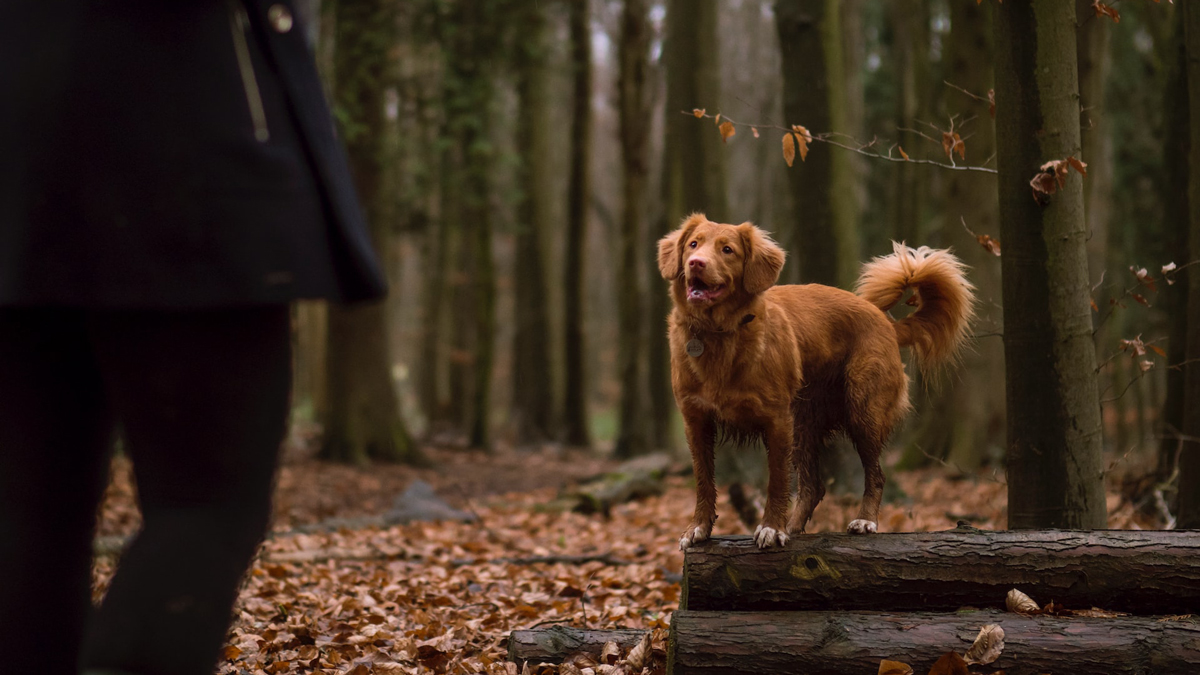Guide to Keeping Safe on Autumn Dog Walks

Our dog walks have suddenly become a lot colder. Regardless of rain or shine our canine companions need their daily exercise. With the change in season and a brisk chill in the air, here is some important advice to keep in mind for those wet windy walkies.
Make your Dog Visible
With darker evenings it can be difficult to keep a close eye on your dog during walks. Autumn is the best time to get your pooch kitted out with new glowing or reflective walking gear. Being easier to spot is key to keeping our dogs safe in the dark.
As this is an important time of the year for farmers and their livestock, it is also wise to keep a shorter and tighter leash when around animal areas.
Keep their ID Tag up to Date
With the increased risk of dogs getting lost in the dark, an ID Tag is vital for them to be quickly and easily identified. Did you know ID Tags are also required by law?
The Control of Dogs Act 1992, states that dogs must wear a collar and an identity tag when in a public place. Keeping the tag up to date is the owner’s responsibility. So, make sure to double check tags (and microchip!) before heading out on your woodland adventure.
Avoid the Acorns
Both Acorns and Conkers are true symbols of Autumn. Many of us fondly remember collecting these as children, although it may come as a surprise to learn that both oak acorns and conkers are poisonous to our dogs.
Our canine companions don’t think before they munch, so it is important to keep a close eye on what they are doing during walks.
Some common signs of poisoning would be lethargy, vomiting, diarrhoea, and bad abdominal pain. If you suspect your furry friend has swallowed an oak acorn or a conker, it is essential to take them to the vet immediately.
Protect Dogs from the Cold
Although our dogs have furry coats, some might still feel the chill as the weather cools. Using an extra cosy layer will keep dogs snuggly and protect them from the rain.
For advice on fitting a dog coat, check out this handy guide.
The lower temperature also affects our pet’s joint health. In damp and cold weather, our dog’s joints can seize up. This makes movement painful, stiff, and uncomfortable. The key to keeping joints strong is using a diet packed with supportive supplements.
Our Academy trained instore teams offer handy fitting and ID tag services, to help you prep for the new season. Look for your local store here.


